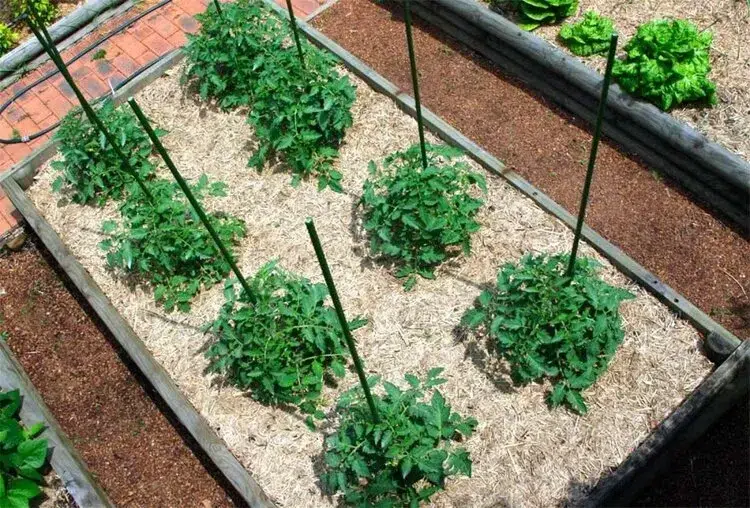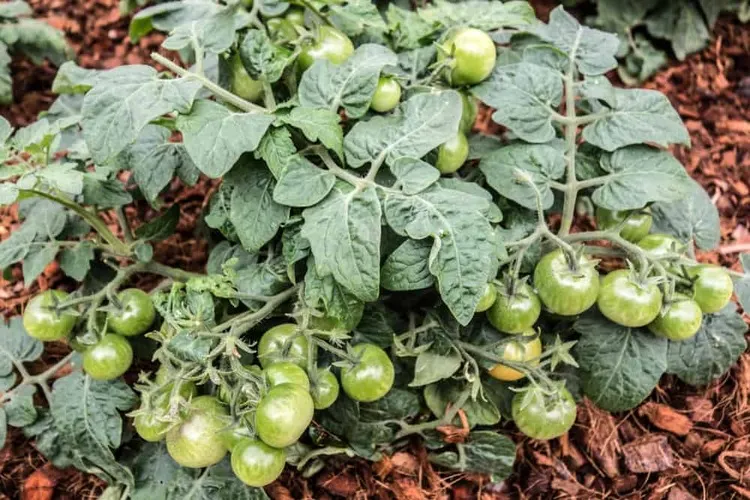Is it good to place mulch at the foot of tomatoes? What are the benefits? What is the best mulch for tomatoes? Focus on the top options available!
Have you recently noticed that your neighbors put a thick thing at the foot of their tomato plants? What is it exactly? Well, if you’re a novice gardener, we say it’s mulch, and it has many benefits for the vegetable garden, as well as the garden in general. Which one exactly? And more specifically, what mulch for tomatoes to choose?
Is It a Good Idea to Place Mulch Under the Tomatoes?
Leaving the soil bare is, in fact, something to avoid. Permanent soil cover provides several benefits for crops, especially tomatoes. And to answer the aforementioned question: yes, mulch around the base of the tomatoes is a great idea. Here is an overview of the benefits of this method , so much appreciated by gardeners:
- One of the greatest advantages of mulch is its ability to keep the soil moist and thus limit the evaporation of water in the event of high temperatures. The soil stays moist, the plants benefit from it and you water less frequently. Mulching is one of the best ways to protect tomatoes from heatwaves.
- Mulching helps to limit soil erosion
- As it breaks down, mulch provides essential nutrients to plants.
- A thick layer of mulch deprives weeds of light and thus prevents them from growing.
In short, mulch for tomatoes is highly beneficial. Let’s take a look at the best materials to use.
What Mulch for Tomatoes to Choose?
To the delight of gardeners, there is a wide variety of mulches for tomatoes. While some can be bought in garden centers, others are available in nature and, even, in your own garden. Experts recommend using natural mulch because of its eco-friendliness and cheapness. So, spotlight on the options to choose from!
Grass Clippings
Many people wonder what to do with grass clippings. One of the best uses is as tomato mulch. Be careful, though, as a few rules apply. First, you need to let the grass clippings dry out for two or three days. And, second, it is better to mix them with carbon-rich mulch before using. Straw will do just fine. But why? Because straw is too rich in nitrogen and can burn roots.
Compost
Mulching the tomatoes with compost is a great idea, but you need to have plenty of it. Have you got any? Then don’t hesitate! Rich in nutrients, compost will boost the growth, fruiting and taste of your tomatoes.
Hay
In addition to decomposing quickly, hay also offers an excellent carbon to nitrogen ratio, which is good for tomatoes.
Dead Leaves
Dead leaves make good mulch for tomatoes and are easy to store. Put them in a corner of the garden and use them in the summer. Choose leaves from ash or fruit trees for their good carbon/nitrogen ratio. On the other hand, avoid those of oak and plane tree, because they have high carbon content.
Hemp Mulch for Tomatoes
Also called flax chaff, hemp mulch is recognized in organic farming and is highly effective in protecting the roots of your tomatoes from all temperatures. This organic matter is biodegradable and provides the soil with several nutrients while improving its quality. Spread it in a layer of between 2-4 inches/6-10 cm. Hemp mulch for tomatoes is quite light and you need to water it to stabilize it. That said, it’s best to avoid it in windy areas.
Cocoa Bean Shells
Rich in nitrogen and potassium, cocoa bean shells are an excellent, if somewhat expensive, mulch for tomatoes. This mulch is spread in a layer 1-2 inches/4-5 cm thick. Be careful, though, as it contains theobromine, a substance toxic to cats and dogs.
Also read: Sheet Mulching on a Slope: How to Do It Properly?



